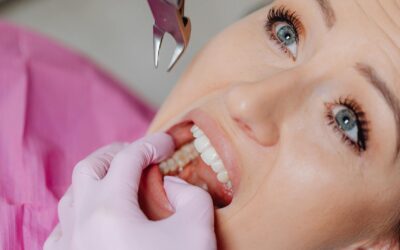White gums around teeth often raise concern—but not all causes are serious. While these patches can signal harmless issues like irritation or mild inflammation, they may also reflect underlying conditions such as gingivitis, oral thrush, or leukoplakia. In this guide, we’ll explore the most common causes, safe home remedies, and red flags that warrant a dentist visit. This article follows guidance from trusted medical and dental sources including the American Dental Association (ADA).
Common Causes
1. Gingivitis & Periodontal Disease
- Gingivitis is mild gum inflammation causing redness, swelling, and sometimes white discoloration near the gumline. It stems from plaque buildup and poor oral hygiene and is reversible with proper care.
- If ignored, gingivitis may progress to periodontitis, damaging deeper tissues and potentially leading to white, receding gums.
Note: Regular brushing, flossing, and professional cleanings can reverse gingivitis in its early stages.
Symptoms of Gingivitis:
- Puffy or soft gums
- White or pale patches near teeth
- Bleeding while brushing or flossing
- Bad breath
Risk Factors:
- Infrequent brushing/flossing
- Smoking or chewing tobacco
- Diabetes
- Dry mouth (xerostomia)
2. Oral Thrush (Candidiasis)
Caused by an overgrowth of Candida fungus, oral thrush appears as creamy white or slightly raised patches on gums, tongue, or inner cheeks. It’s more common in babies, the elderly, and people using inhalers or antibiotics. If left untreated, thrush may cause discomfort or spread further into the body.
Symptoms:
- White patches on gums and tongue
- Loss of taste or a cottony feeling in the mouth
- Cracks at the corners of the mouth
Contributing Factors:
- Weak immune system
- Antibiotic overuse
- Diabetes
- Dentures not cleaned regularly
3. Leukoplakia
This condition shows up as thick, non-scrapable white patches on gums, cheeks, or tongue. Often linked to chronic irritation (like tobacco use), some cases may develop into precancerous lesions.
Notable Signs:
- White patches with defined borders
- Cannot be rubbed off
- No initial pain or swelling
Key Note: If white patches persist for over 2 weeks or are speckled with red, see a dentist ASAP—it could indicate early-stage oral cancer.
4. Oral Lichen Planus
An autoimmune condition causing lace-like white patches and sometimes red, sore areas. It commonly affects the cheeks, gums, tongue, and inner lips. Though the exact cause is unclear, stress, certain medications, or infections may trigger it.
Symptoms:
- White lacy patterns
- Sore gums
- Discomfort while eating or brushing
Long-Term Risks:
- Gum sensitivity
- Oral ulcers
- Risk of secondary infection
5. Nutritional Deficiencies or Medical Conditions
Pale or white gums may sometimes result from:
- Iron-deficiency anemia
- Vitamin B12 or folate deficiency
- Poor circulation or low red blood cell count
Certain autoimmune disorders, leukemia, or kidney disease may also affect gum coloration.
Note: If you notice other symptoms like fatigue, dizziness, or cold hands/feet with pale gums, consult a healthcare provider.
Safe Remedies & Prevention
🪥 Oral Hygiene Basics
- Brush twice daily with fluoride toothpaste, using gentle, circular motions.
- Clean between teeth once daily with floss, interdental brushes, or water flossers.
- Rinse with antimicrobial or alcohol-free mouthwash to reduce bacteria.
Home Remedies Support
Use these remedies alongside—not instead of—professional advice:
- Saltwater rinse: Dissolve ½ teaspoon salt in warm water. Swish for 30 seconds.
- Hydrogen peroxide (3%): Dilute 1:1 with water. Use as a short-term rinse to reduce bacteria.
- Coconut oil pulling: Swish for 10–20 minutes in the morning to reduce plaque and soothe inflammation.
Note: Always consult your dentist before trying any home remedy regularly.
Nutrition & Lifestyle Adjustments
- Increase iron and B12 intake: Add leafy greens, legumes, fish, poultry, and fortified cereals.
- Stay hydrated: Supports saliva production and keeps oral tissues healthy.
- Avoid smoking or tobacco: Reduces risk of gum irritation, leukoplakia, and oral cancer.
- Limit sugars: Frequent sugar intake encourages bacterial overgrowth.
When to See the Dentist
Look out for these warning signs:
| Symptom | Why It Matters |
|---|---|
| Patches lasting >2 weeks | Could indicate leukoplakia or precancerous changes |
| Pain, bleeding, swelling | Signs of progressing gum disease |
| Loose teeth or receding gums | Potential periodontitis |
| Difficulty eating or swallowing | May indicate oral lichen planus or thrush |
Routine dental visits (every 6 months) can help spot issues early.
Diagnosis & Treatment Options
1. Gingivitis
- Professional cleaning and improved home care
- Prescription-strength fluoride toothpaste
2. Thrush
- Antifungal mouth rinse (nystatin)
- Oral antifungal tablets (fluconazole)
3. Leukoplakia
- Regular monitoring
- Removal via laser or surgical excision if needed
- Eliminate irritants (tobacco, rough dental work)
4. Oral Lichen Planus
- Corticosteroid gels
- Antiseptic mouth rinses
- Immune-modulating treatments for severe cases
5. Deficiencies or Systemic Causes
- Blood tests to determine anemia or other issues
- Supplements or dietary improvements
Tips for Daily Gum Care
- Choose a soft-bristled toothbrush to avoid gum abrasion
- Replace your brush every 3 months
- Consider electric toothbrushes for better plaque control
- Use sugar-free gum to stimulate saliva
Optional Add-ons:
- Use a tongue scraper to reduce oral bacteria
- Chew raw vegetables like carrots or celery to naturally clean teeth
FAQs
What does it mean if the gums around my teeth are white?
White gums around teeth can indicate several conditions, including irritation, anemia, canker sores, leukoplakia, or a fungal infection. It’s important to observe if the whiteness is persistent or paired with other symptoms like pain or swelling.
Can white gums around teeth go away on their own?
Yes, white gums caused by minor irritation, trauma, or mild inflammation may go away on their own within a few days. However, if the condition lasts more than a week, it’s best to consult a dentist.
Are white gums a sign of oral cancer?
White gums are not always cancerous, but in some cases, they may be linked to leukoplakia, which can be precancerous. A dental evaluation is essential if you notice thick, persistent white patches on your gums.
How can I treat white gums around my teeth at home?
Mild white gums can be relieved at home with saltwater rinses, good oral hygiene, and avoiding irritating foods. However, persistent or painful symptoms should be examined by a dental professional.
When should I worry about white gums around teeth?
You should be concerned if white gums are accompanied by pain, swelling, bad breath, bleeding, or ulcers. These symptoms may indicate infection or a more serious condition requiring prompt dental care.
Final Thoughts
White gums around teeth can result from various causes—some harmless and others more serious. Practicing good oral hygiene, eating a balanced diet, and avoiding irritants like tobacco can significantly reduce your risk.
Remember:
- Don’t panic at the first sign of white gums
- Do observe and track any changes
- See a dentist if the issue persists or worsens
Your gums are a window into your overall health. By taking them seriously, you protect not only your smile but your whole body.
Disclaimer: The content provided in this article is for educational and informational purposes only. It does not substitute professional medical advice, diagnosis, or treatment. For guidance specific to your dental condition or recovery, please consult your dentist, oral surgeon, or licensed healthcare provider.










0 Comments